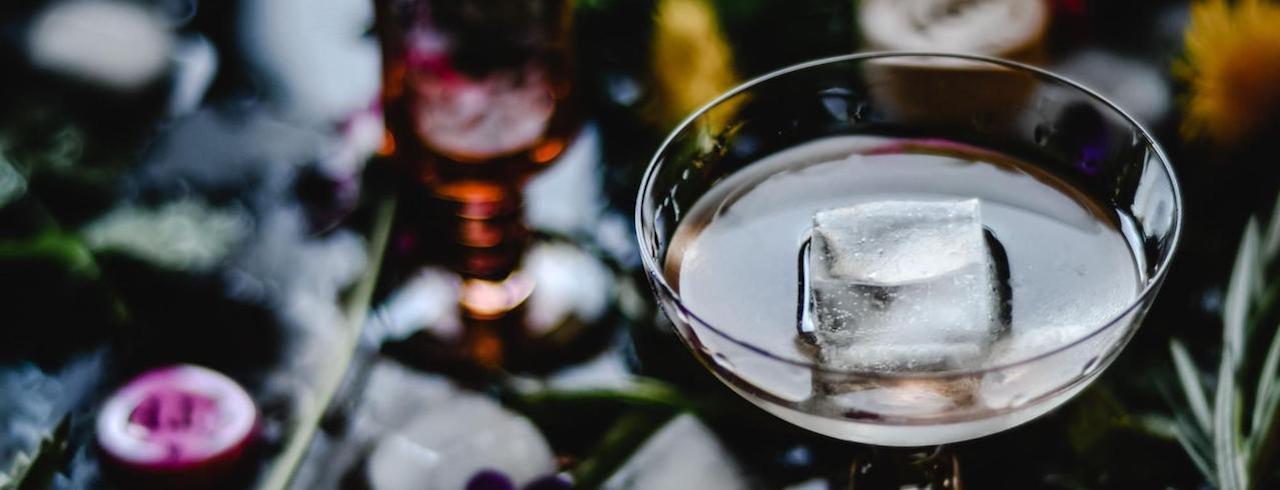
Can I Put Ice in my Wine?
Do we dare? We’ve all been tempted to cool down a nice glass of wine with one of the greatest modern inventions: ice.
Industry leaders and wine enthusiasts may frown on putting ice in our wine, but not all of us are as subservient to traditions.
All you want is a chilled glass of wine, and the simplest way to achieve that is by adding ice.
You certainly can add ice to wine, but there are some drawbacks. As you know well, ice is frozen water, and over time, especially on a hot day, ice will melt in your glass. Once extra water is added to your wine, it will change the drinking experience of your glass.
Additional water can lighten a full-body red or dilute a perky and sweet wine, making it one of the ultimate faux pas. If you’re willing to sacrifice your wine’s quality for a quick cool, then we beg you to use a big ball of ice rather than smaller cubes. An ice ball will keep for longer and allow you to finish your glass before it’s completely diluted.
We’re asking you to avoid ice, but what other solutions do you have?
Alternatives to Adding Ice to Your Glass
Ice Bucket
The wine may be the solution to your problems, but a wine ice bucket is a solution to your wine problems. A wine bucket allows you to prevent your Cabernet Franc from being watered down and having to worry about chilling each serving at a time.
If you’re hosting a dinner party or a night with a few girlfriends where you’ll be drinking wine, you may want to use an ice bucket to store a few table wines for the evening.
Chilled Glass
If your plans for the evening include a bottle of Chenin Blanc, you can place a couple of drinking glasses in the freezer for about 30 minutes before uncorking your wine.
A lightly frosted glass can keep you away from ice cubes and bring you closer to a perfectly chilled wine. Glass is a delicate material to place in cold climates, so you may want to find yourself a set of stainless steel glasses.
Stainless steel stays cooler for longer periods than glass, so it can even do the duty of chilling two servings of your favorite wine.
Place Your Wine in the Freezer
Skip the wine buckets and the extra step of placing glasses in the freezer; you can just pop your bottle directly into the freezer.
For a lightly chilled wine, keep your bottle in the freezer for about 22 minutes. Let your bottle sit for about 28 minutes for a bottle of thoroughly chilled wine. If you’re really in a rush, you can even dampen a cloth, wrap it around your bottle, and pop it in the freezer for about 10 minutes.
Try your best to remember that you’re chilling wine, and perhaps even place a timer on your phone or Alexa. If you’re wine freezes, don’t fret, it’s not the end of the world or your Vidal Blanc.
Your wine shouldn’t freeze entirely because of the alcohol content, and when softened, the wine is still completely safe to drink. There are a few consequences of placing your wine in the freezer that you should be wary of.
As your wine freezes, it can expand and crack the glass or pop the cork of the bottle, leaving a decadent mess in your freezer. Additionally, wine is not the biggest fan of dramatic temperature changes, and its flavor profile may change.
For a quick fix, placing your wine in the freezer is a fine solution; just be sure not to leave it there for the long term.
Use Grapes
The ultimate hack: freezing grapes to use in place of ice cubes.
Grapes won’t dilute your wine, and well, they’re grapes, so you shouldn’t expect a compromise on flavor. Going back to the source is a perfect solution to warm wine.
Use lighter grapes for lighter wines, and darker grapes for darker ones. Voila, a chilled wine without chilling the wine.
Chilled Wine
An excellent and cooling glass of wine appeals to many, and so we’re always looking for ways to freshen up our drinks without compromising our lovely wine.
Certain wines are meant to be served chilled, and if you have the foresight to know you’ll be craving a cool and refreshing wine, you should do your shopping with those varietals in mind.
Champagne, Prosecco, Sparkling Roses, and certain whites are best-served chilled, whereas red grape varietals are often meant to be served at room temperature. Do your shopping with this rule of thumb in mind.
You don’t have to compromise elegance for a chilled sipping experience. Ice in your wine isn’t the best solution, but there’s always a way to achieve a glass that’s perfect to your liking.